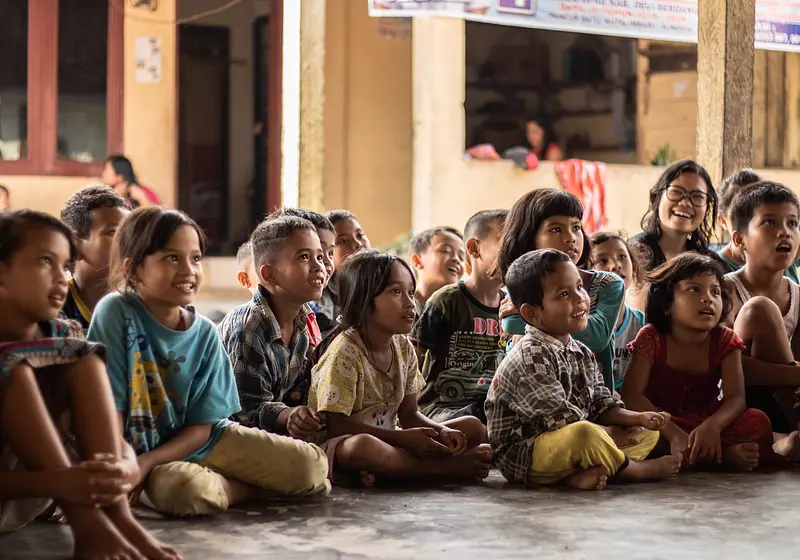From Snapchat to Starbucks, Instagram to McDonald's, countries around the world are beginning to have more and more things in common. This is down to globalisation: increased trade and cultural exchange mean that countries are developing similar cultures. But, in this world, does this mean that nations are adopting western culture?
Let us slide into your dms 🥰
Get notified of top trending articles like this one every week! (we won't spam you)Definition
In order to have a fully-formed opinion on this topic, it's important to know what exactly these words mean. According to the Cambridge dictionary, globalisation is a situation in which available goods and services, or social and cultural influences, gradually become similar in all parts of the world. Basically, this is when the culture of different countries become similar.
According to the Merriam-Webster dictionary, westernisation is conversion to or adoption of western traditions or techniques. In other words, it is when different countries start developing western culture.
As we can see, there is a difference between the definitions. Theoretically, globalisation does not automatically mean westernisation. However, in our society, there seems to be a fine line at most between the two. This article is going to explore whether or not we are becoming more westernised as a globe.
Take the Quiz: Which Indian city is the perfect holiday spot for you!?
Let's match you with an Indian city that you would love!
Movies
I guarantee that each and every person reading this article has seen a Hollywood movie, or at least heard of one. Hollywood is the largest film industry in terms of box office gross revenue and is expected to generate $72.1 billion in revenue by the end of 2020. This is no surprise, considering that this film industry is hugely popular, with people all over the world glamorising and obsessing over major Hollywood stars. The movies tend to glorify the American culture and way of life and these ideas are spread all over the world as so many people watch Hollywood movies.
This means that people in different countries start to adopt the American culture as they think that this is normal or 'correct'. For example, in almost every Hollywood movie there is romance involved- including intimate touch, teenagers in love etc. Many other cultures and religions frown upon this (for example, in Islam, it is forbidden to touch anyone of the opposite gender unless you are married to them) but, because these movies influence so many people, this style of dating is considered normal.
On the other hand, there are a lot of other film industries from different cultures that are very large as well. For example, Bollywood (the Indian film industry) sells 2.2 billion movie tickets annually- which is more than Hollywood does. However, these movies are not as globally spread and most people who watch them are originally from South Asia.
Clothing
Another aspect of this debate is the clothes that people wear. A Western-style of dress, with T-shirts, jeans and trainers are worn by most people around the world. This could be down to a variety of different reasons.
One of these reasons is modernisation (the act of making something more modern). Western civilisation is much newer than ancient civilisations. Some communities tend to wear western clothes for everyday activities, but local clothing is worn on special occasions (such as religious holidays or weddings).
Eastern clothing is worn on traditional occasions that have been occurring for centuries whereas western clothing is worn when participating in relatively modern activities (going to a restaurant, going to an office, shopping in a mall etc.). Therefore, this reinforces the idea that western is modern and eastern is traditional. Large clothing shops such as Topshop, H&M and Zara are seen all over the world and tend to sell western clothes.
However, many people still value traditional clothing in everyday life, such as the sari, salwar kameez and dhoti in South Asia and kimonos in Japan. Ethnic jewellery and designs are used by certain western shops- in fact, some of them have been accused of cultural appropriation. This is when you take something of a culture that is not your own without knowing much about the culture.
Beauty standards
Have you realised that most of the things that are considered attractive are traits common in the west? Beauty adverts force these standards onto people, completely disregarding any cultural or individual differences. Fair skin, small noses, and long, blonde hair are what is considered beautiful in the west, and, through the spread of advertisements and movies, beautiful everywhere else.
Those with curly hair, afros or dreadlocks are not considered to be as desirable. Cosmetic products are catered to fairer skin, making it hard for those with darker skin tones to find suitable products. On top of this, our society has pressured us into wanting to be 'attractive' from a very early age.
For example, fairytales often describe the princess or the 'good' character as beautiful and the villain as ugly. However, for most people from eastern cultural backgrounds, these standards are impossible to attain.
Rejecting western ideals
Some countries and people have acted to reject these western ideals. For example, the small Himalayan kingdom of Bhutan has tried to reduce modern influences (such as not allowing television until 1999). France limits the amount of English language television and music that can be played and broadcast in order to preserve the French language. These are just some examples of the various ways that certain countries have tried to stop westernisation.
We can see from these points that globalisation seems to dilute some cultures by bringing in Western influences. However, the flow of culture is not always one way. North America and Europe have been influenced by outside cultures in the form of music, food, fashion etc. For example, meditation and yoga have become more popular in the west, and they are both religious and philosophical practises from Asia.
It can be concluded that, instead of all the countries following western culture, a hybrid culture is followed instead. A hybrid culture is when two cultures meet and a new culture emerges, having aspects from both cultures. This is seen as positive, even exciting, as elements of traditional cultures enrich more modern ones. In other words, it is the best of both worlds.
















